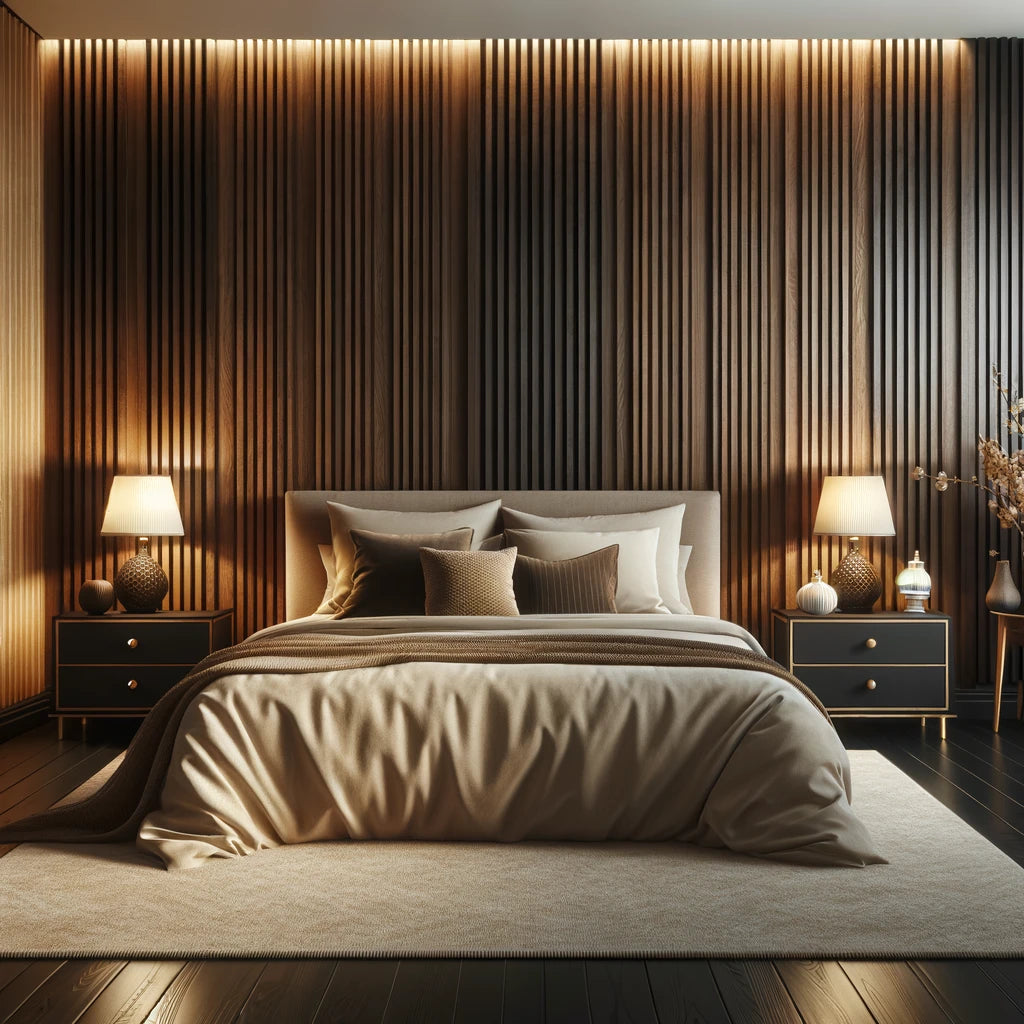Bedroom Bliss: Interior Wood Paneling for Cozy Nights
Transform your bedroom into a sanctuary of warmth and comfort with interior wood paneling. This timeless design element brings a natural, cozy feel to any space, making it perfect for creating a serene retreat. In this comprehensive guide, we’ll explore the benefits of interior wood paneling, provide step-by-step installation instructions, and offer expert tips to help you achieve a professional finish. Plus, explore our stunning collection of wall panels on our website to find the perfect match for your home.
The Cozy Appeal of Interior Wood Paneling
Aesthetic and Design Benefits of Interior Wood Paneling
Interior wood paneling adds a touch of rustic charm and elegance to any bedroom. Its natural textures and warm tones create a soothing atmosphere, ideal for restful nights and peaceful mornings. With various styles, from classic shiplap to modern slat designs, interior wood paneling can be customized to match any decor, providing endless possibilities for creating your dream bedroom.
Durability and Practicality
Wood paneling is not only beautiful but also durable. High-quality wood panels are resistant to wear and tear, ensuring your walls stay looking great for years. They also provide additional insulation, helping to maintain a comfortable temperature in your bedroom and reducing energy costs.
Easy Maintenance
One of the significant advantages of interior wood paneling is its low maintenance. Wood panels are easy to clean and resistant to stains and scratches. With regular dusting and occasional polishing, your wood-paneled walls will retain their stunning appearance for years to come.
Step-by-Step Guide to Installing Interior Wood Paneling
Tools and Materials You'll Need
Before you start, gather the following tools and materials:
- Interior wood paneling
- Measuring tape
- Level
- Pencil
- Adhesive or nails
- Saw (if panels need cutting)
- Sandpaper
- Caulking gun
- Caulk
- Paint or wood finish (if needed)
- Safety gear (gloves, goggles)
Step 1: Prepare Your Walls
Cleaning and Smoothing the Surface
Begin by thoroughly cleaning your walls to remove any dust, dirt, or grease. Use sandpaper to smooth out any rough areas or imperfections. This preparation is crucial to ensure that the interior wood paneling adheres properly to the wall.
Measuring and Marking
Measure the dimensions of your wall and mark where each wood panel will go. Use a level to ensure your lines are straight. Accurate measurements and markings are essential for achieving a professional finish.
Step 2: Cutting the Wood Panels
Measuring and Marking the Panels
Measure your wood panels to fit the dimensions you marked on the wall. Mark the panels with a pencil where they need to be cut.
Cutting the Panels
Using a saw, carefully cut the panels to the required size. Wear safety gear during this step to protect yourself from dust and debris.
Step 3: Applying Adhesive
Choosing the Right Adhesive
Select an adhesive suitable for the type of wood panels you are using. Some panels may require specific adhesives, so check the manufacturer's recommendations.
Applying the Adhesive
Apply the adhesive to the back of the wood panel in a zigzag pattern. Be generous but avoid applying too much adhesive, which can cause the panels to slip or not adhere properly.
Step 4: Installing the Wood Panels
Placing the Panels on the Wall
Carefully press the panel onto the wall, starting from the bottom and working your way up. Use a level to ensure the panel is straight. Press firmly to ensure good adhesion.
Securing the Panels
Depending on the type of wood panels and the adhesive used, you may need to secure the panels with nails or screws temporarily until the adhesive sets. Follow the manufacturer's instructions for the best results.
Step 5: Finishing Touches
Filling Gaps and Seams
Once all the panels are installed, check for any gaps or seams between them. Use caulk to fill these areas for a seamless look. Smooth the caulk with your finger or a caulking tool.
Finishing (If Needed)
If your wood panels require a finish, consider applying a coat of paint or wood stain to enhance their appearance. Choose a finish that complements your room’s decor and protects the wood.
Final Inspection
After the panels are installed and any finish or caulk has dried, inspect your work. Ensure all panels are securely attached and that there are no visible gaps or imperfections.
Tips for a Professional Finish
Take Your Time
Rushing through the installation can lead to mistakes. Take your time to measure, cut, and apply each panel carefully to ensure a high-quality finish.
Use Quality Materials
Investing in high-quality interior wood paneling and adhesive will result in a more durable and attractive finish. Cheap materials may not adhere well and can deteriorate over time.
Seek Help If Needed
If you’re unsure about any part of the process, don’t hesitate to seek help from a professional or consult online resources. Proper guidance can make a significant difference in the final result.
Regular Maintenance
To keep your interior wood paneling looking its best, clean it regularly with a soft cloth and mild detergent. Avoid using harsh chemicals that can damage the surface.
Transform your bedroom into a cozy retreat with the charm of interior wood paneling. Follow our step-by-step guide to achieve a professional finish that adds warmth and beauty to your space. Ready to get started? Visit our website to explore our extensive collection of wall panels and find the perfect style to match your home decor.

